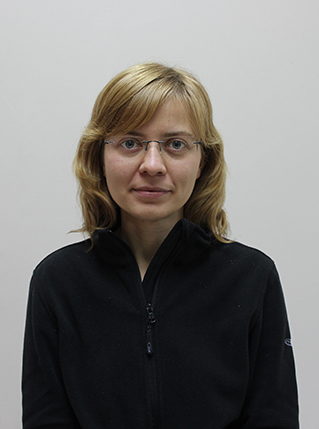 |
Dr. Weronika NarlochWeronika Narloch is from Kościerzyna, a town in northern Poland. She received her PhD. in March 2017 from Nicolaus Copernicus Astronomical Center of the Polish Academy of Sciences, placed in Warsaw, Poland. She joined Astronomy Department at the beginnig of August 2018 as a Millennium Institute of Astrophysics (MAS) postdoctoral fellow, where she works with professor Wolfgang Gieren in “Araucaria Group”. Her work will be dedicated to:
She likes to conduct observations, multi-wavelength photometry and my favourite objects are star clusters, particularly globular clusters. She studied Technical Physic on specialization of Applied Physics on a Gdańsk University of Technology, where she got her Engineer (2011) and later Master-Engineer (2012). After thar she started her PhD. studies in Nicolaus Copernicus Astronomical Center of the Polish Academy of Sciences (NCAC). From the beginnig, she became a member of the project Cluster Ages Experiment (CASE) which aims in determing the accurate ages and distances of nearby globular clusters by using observations of detached eclipsing binaries. Her part in the project was determination of relative proper motions of stars in the fields of globular clusters using data collected with 1-m Swope telescope placed in Las Campanas Observatory in Chile. On 3rd of March 2017 she defended a doctoral disertation titled "Astrometry of nearby globular clusters". After defense she joined the Araucaria group in NCAC led by prof. Grzegorz Pietrzyński. The main goal of the project is improving the calibration of the cosmic distance scale in the local Universe. Her project within Araucaria group is a survay of LMC and SMC in Strömgren filters. Data were collected with 4.1-m SOAR telescope. In first part of the project, the goal is to select candidates for non-pulsating stars residing in the classical instability strip for Cepheids and answer the question what is the percentage of such stars and what is their nature. In the second part of the project, she plans to perform a photometry for star clusters in LMC and SMC to find their metalicity which will be possible thanks to the parameter m1 sensitive to metalicity. Apart form that, she conducts observations for Araucaria Project mostly in the Cerro Armazones Observatory, but also other observatories. She collaborate with Araucaria Project on improving the calibration of the cosmic distance scale in the Local Universe by perfoming photometry of variable stars in optical and infrared bands (detached eclipsing binaries, RR Lyrae stars, Cepheids).
|





